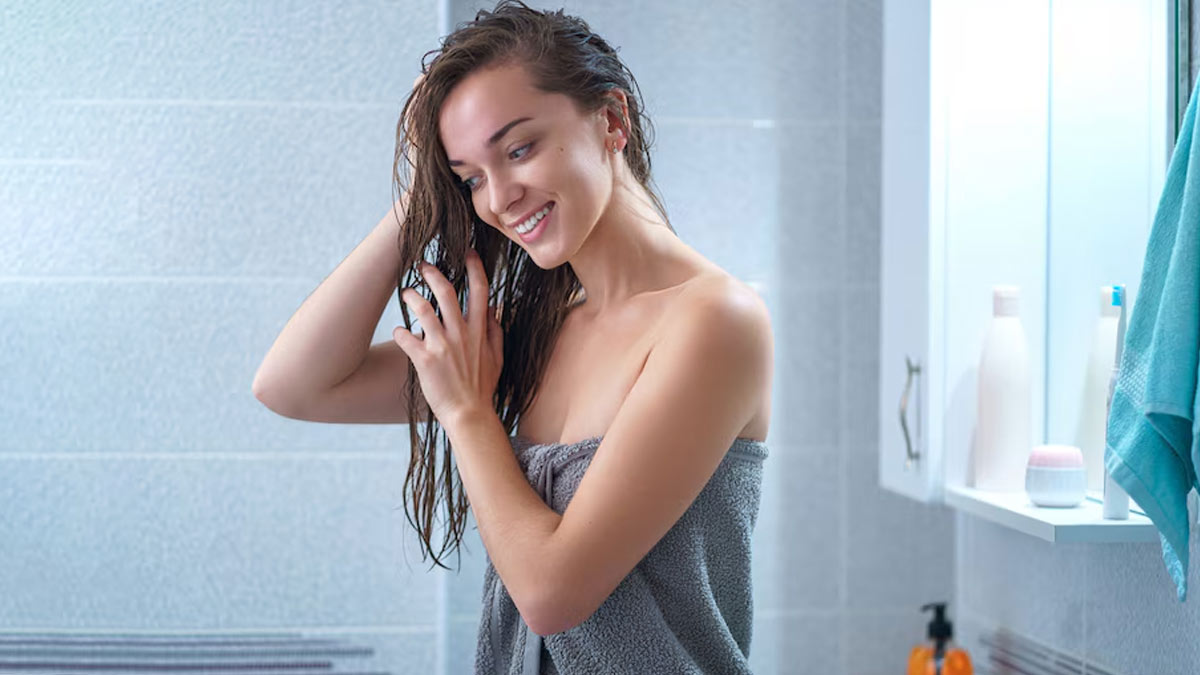
Hair conditioner is an essential product in maintaining healthy, shiny, and manageable hair. However, the way you use it can make a significant difference in the overall health of your hair and scalp. While it's tempting to think that applying conditioner from root to tip will maximise the benefits, dermatologists and hair experts advise against applying conditioner directly on the scalp. Here's why—and how you can get the most out of your conditioner without compromising your scalp's health.
Table of Content:-
The Role of Conditioner and the Scalp's Natural Oils
Hair conditioner is primarily designed to add moisture and smooth the hair shaft, which can become dry and damaged from daily wear and tear, heat styling, and environmental factors. The hair shaft, especially the ends, tends to be more porous and in need of extra hydration compared to the roots.
Sherin Bhan, Co-Founder and Cosmetologist at Studio 1915 Luxury Aesthetic Clinic, emphasises, "Conditioners are meant to target the hair shaft, not the scalp. The scalp naturally produces sebum, an oil that helps to moisturise the hair close to the roots. Applying conditioner directly to the scalp can disrupt this natural process, leading to an imbalance."
Also read: Why Is Paraben A Big No No For Your Skin And Hair Care? Expert Shares Insights
Why You Should Avoid Applying Conditioner on the Scalp

Applying conditioner on your scalp can lead to several problems:
Oil imbalance: The scalp produces sebum to naturally condition the roots of your hair. When you apply conditioner to the scalp, it can lead to an overproduction of oil as the scalp tries to compensate for the disruption. This can make your hair look greasy and lead to scalp issues.
Build-up: Conditioner is thicker and can leave behind residues that are difficult to rinse out completely from the scalp. Over time, this build-up can clog hair follicles, leading to problems like dandruff, itchiness, and even hair loss.
Weighed-down hair: Residual conditioner on the scalp can weigh down your hair, making it look flat and lifeless. This is especially problematic for those with fine or thinning hair.
A study published in the Journal of Cosmetic Dermatology found that improper application of hair conditioner, particularly on the scalp, could exacerbate conditions like seborrheic dermatitis and scalp acne due to the occlusive properties of conditioners. These conditions are often triggered by blocked follicles and an overproduction of sebum, both of which can be caused by conditioner residue on the scalp.
Also read: 7-Steps Korean Hair Care Tips to Embrace Your Inner K-Pop Star
The Proper Way to Use Hair Conditioner

To get the best results from your conditioner, it's crucial to apply it correctly:
Focus on the mid-lengths and ends: The hair at the ends is older, more damaged, and often less moisturised than the hair at the roots. "Apply conditioner starting from the mid-shaft to the ends of your hair, where it's needed most," advises Bhan. This method ensures that the hair is hydrated and smooth without affecting the scalp's natural balance.
Massage gently: After applying the conditioner, gently massage it into your hair, focusing on the ends. This helps the conditioner penetrate the hair shaft and provides better results.
Leave it on for the recommended time: Conditioner needs time to work its magic. Leave it on for the recommended amount of time, usually a few minutes, to allow the ingredients to fully absorb into your hair.
Rinse thoroughly: Make sure to rinse out the conditioner completely. Bhan said, “Any residue left behind can weigh your hair down and contribute to scalp issues.”
Conclusion
Conditioning your hair is a vital step in maintaining its health and beauty, but it's essential to do it correctly. By avoiding the scalp and focusing on the hair shaft, particularly the ends, you can ensure that your hair remains smooth, hydrated, and full of life. Remember, your scalp has its own natural ways of keeping itself moisturised—let it do its job without interference.
Also watch this video
Read Next
Say Hello To Healthier Hair With Glycolic Acid: Here's How It Transforms Your Hair Care Routine
How we keep this article up to date:
We work with experts and keep a close eye on the latest in health and wellness. Whenever there is a new research or helpful information, we update our articles with accurate and useful advice.
Current Version